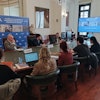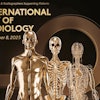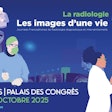
The consensus of the great debate at the U.K. Radiological Congress (UKRC) two weeks ago was that until local networks can be developed and optimized to cope with out-of-hours work, teleradiology outsourcing is here to stay. This means it's vital to get the approach right.
Imaging departments who thought of outsourcing cross-sectional imaging at night as a simple switch they could turn on one day and then sleep have made a costly mistake. They will lose valuable radiographers, the costs to their departments will escalate until they become unaffordable, and the whole exercise will be of one of disappointment and frustration. They will move from one teleradiology company to the next, before eventually having to find another solution.
To help avoid the pitfalls, here are five recommendations to anybody writing a business case for outsourcing on call:
Get your CT radiographers on board before you even start. If they feel alienated and abandoned while their radiologists are asleep, many of them will leave.
Do not calculate the cost of the service based on current numbers but assume at least a 20% increase.
Establish some referral guidelines involving local radiologists, radiographers, and department managers in conjunction with a teleradiology company.
Do not engage a teleradiology company that tells you the numbers will not increase, as they will be reluctant to work with you to mitigate that inevitable rise.
Make it clear to the teleradiology company that, although it might not be necessary in every case, there has to be the facility for clinicians to discuss cases with radiologists. Do not engage a teleradiology company who cannot commit to this.
Many imaging departments have built business cases for outsourcing out-of-hours cross-sectional imaging reporting based on historical numbers and have been shocked at the size of the bill. Frankly, that was naïve.
Those who approach the exercise of outsourcing with their eyes open, protect the inevitable effect on their service and on their other professional staff, and use the knowledge of the teleradiology company to help them control the inevitable rise in demand, will find it easier to recruit and retain staff and will preserve valuable resources to scan those patients who really do need a scan during the day and night.
Impassioned pleas from radiographers
 If sensible rules aren't applied to overnight scanning, there may soon be no radiographers left, Dr. George McInnes said.
If sensible rules aren't applied to overnight scanning, there may soon be no radiographers left, Dr. George McInnes said.
The experts on the panel for the UKRC debate had some important points to make, but it was the impassioned speeches from the floor by a number of radiographers that struck a chord with the rest of the audience. I had been keen to make some points of my own, but such was the length of the queue of concerned radiographers at each microphone that I ran out of time.
A fact that many people representing teleradiology companies choose to gloss over, ignore, or imply has not happened to their clients is that as soon as a hospital that previously used in-house radiologists to cover nighttime on-call duties hands over that work to a teleradiology company, the number of cases performed overnight almost doubles and then keeps increasing from then on. It happened in my own hospital, and I have seen the figures from other hospitals looking to change their teleradiology supplier because of cost.
Without a doubt, as stated at the debate by Dr. Stephen Davies from Medica and by Dr, Robin Evans from Radiology Reporting Online commenting on the article in AuntMinnieEurope.com, the rise in out-of-hours scanning numbers is multifactorial. National Institute of Health and Care Excellence (NICE) guidelines, target-driven emergency departments, increasing reliance on imaging on the part of inexperienced clinicians, and medicolegal considerations are all adding to the burden of nighttime radiology. The constant publicity and statements from politicians about the need for a seamless 24-hour National Health Service (NHS) blur the distinction between what is an emergency and what is not.
In February 2014, when the department for which I work started to use an external teleradiology provider from 10 p.m., the graph of out-of-hours work that was previously increasing gradually took an immediate steep upward curve. From that point onward, our radiographers covering the service felt alone in their suffering and such has been the negative impact on their life/work balance that many have voted with their feet, and we have lost count of the number of previously very loyal colleagues who have left for the private sector.
Some players in the teleradiology market prefer to believe that outsourcing on-call work has not contributed to this proliferation of out-of-hours cross-sectional imaging. It's important to tackle this issue head-on.
The number of out-of-hours scans had increased so much in one hospital group in southeast England that the clinical director was hoping to renegotiate a better deal, perhaps even with another provider, because hospital management was threatening to pull out of teleradiology altogether and return the on-call service to in-house radiologists. However, he worked closely with his clinicians and with the teleradiology company to reinstate and enforce some local protocols to accept or decline nighttime imaging requests. By the time I met him again at the UKRC in Liverpool, he was pleased to report to me that their graph of nighttime cross-sectional imaging had flattened and turned in the other direction.
For the adoption of outsourcing on-call work, it is important for teleradiology companies to work closely with clinicians to apply workable rules. Relatively simple measures like strongly discouraging all but the most urgent requests between 4 a.m. and 8 a.m. focuses the mind of the referring clinician that most scans can easily wait until the department opens.
If we do not apply some sensible rules to overnight scanning, we may soon have no radiographers left to scan the patients for whom a scan really is necessary.
Dr. George McInnes is the U.K. medical adviser at the Telemedicine Clinic and consultant radiologist and clinical director at Poole Hospital NHS Foundation Trust, U.K.
The comments and observations expressed herein do not necessarily reflect the opinions of AuntMinnieEurope.com, nor should they be construed as an endorsement or admonishment of any particular vendor, analyst, industry consultant, or consulting group.



















